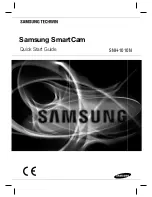
© 2013 Flanders Scientific, Inc.
11
Function Menu
SD Aspect Ratio
Toggles between 4:3 and Anamorphic display of Standard Definition source. This function should be set to match the SD
source being viewed. The default setting is 4:3. If used in conjunction with 1:1 pixel mapping this function can also activate
a PAL SD FHA viewing mode.
Full Screen
This function simply stretches any incoming source to fill the entire screen. Unlike the Zoom feature this full screen stretch
does not preserve aspect ratio, but it does keep all of the active video signal present. Though the full screen mode has
many potential uses it was designed primarily for use with rasterizers that generate a 16:10 or 16:9 aspect 1024x768 output.
Enabling Full Screen mode allows the monitor to stretch the image as intended by the rasterizer.
Pixel Zoom
Once assigned to a function button this feature allows you to toggle the Pixel Zoom feature on/off. When turned on this
feature will generate a positionable and resizable rectangle on screen. The rectangle may be moved left or right using the
H POS (PHASE) rotary knob and up or down using the V POS (CHROMA) rotary knob. The REF POS (BRIGHT) rotary
knob may be used to change the size of the onscreen rectangle. Using these three rotary knobs you can select any area on
screen and then press down on the F Stop (4th from left) rotary knob to zoom to the selected area. This pixel zoom feature
is designed to work with any HD signal formats. A Flashing Tally light will be activated on your monitor whenever you are in
a zoomed mode as a reminder/warning that the entire incoming signal is not being shown on the monitor. To exit the zoomed
mode simply press down on the F Stop (4th from left) rotary knob once more. To exit the Pixel Zoom feature entirely simply
press the function button assigned to this feature once more. The Pixel Zoom function allows for an essentially artifact free
high quality zoom on any portion of an HD signal.
LUM Coloring
The F Stop Rotary knob will adjust the upper limit of the upper color coded region. These color coded ranges are retained in
memory so you can exit and reenter LUM Coloring Mode without having to reset your desired threshold levels.
LUM Coloring with Custom Range
LUM Coloring with All Legal Levels Shown in Greyscale
Underexposed Areas in Blue
Overexposed Areas in Red
LUM Coloring in Default Mode
Overexposed Areas in White
Underexposed Areas in Black
LUM Coloring with Custom Range
This function generates an artificial luminance
map of the incoming source that can be
particularly useful in identifying overexposed
areas in any given shot. An onscreen scale
helps indicate what artificial color corresponds
to what luminance level. The scale will follow
the selected Waveform Scale set in the Scopes
& VU Meters Profile 1: you can choose from
IRE, Digital Levels, or Voltage. In its default
configuration the LUM Coloring feature will
highlight all levels above 100IRE as white and
all levels below 0 IRE as black. In default mode
levels between 0 and 100 IRE will be color
coded. However, you can change the range of
these color coded regions to any preferred
setting by using the monitor’s rotary knobs.
The H POS rotary knob will adjust the lower
limit of the lower color coded region. The
V POS rotary knob will adjust the upper limit
of the lower color coded region. The Ref
Pos rotary knob will adjust the lower
limit of the upper color coded region.
Summary of Contents for CM-170W
Page 39: ... 2013 Flanders Scientific Inc 39 Return to Table of Contents LM 0750W Diagram ...
Page 40: ... 2013 Flanders Scientific Inc 40 Return to Table of Contents LM 0950W Diagram ...
Page 41: ... 2013 Flanders Scientific Inc 41 Return to Table of Contents CM 170W Diagram ...
Page 42: ... 2013 Flanders Scientific Inc 42 Return to Table of Contents LM 2140W Diagram ...
Page 43: ... 2013 Flanders Scientific Inc 43 Return to Table of Contents LM 2340W LM 2340TD Diagram ...
Page 44: ... 2013 Flanders Scientific Inc 44 Return to Table of Contents LM 2461W Diagram ...












































